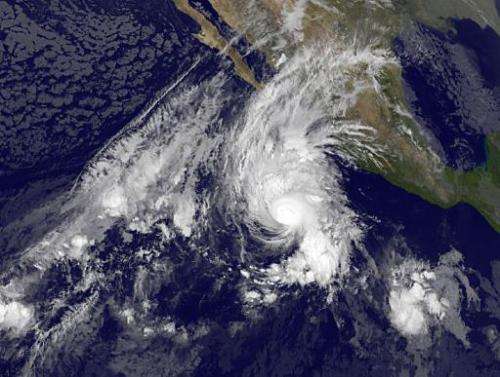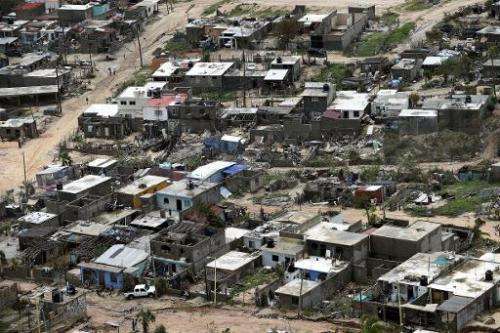Busy Pacific, light Atlantic hurricane season draws to end

Hurricane season ends Sunday, and while the Atlantic had a particularly tranquil spell, the Pacific was at its most active in two decades, US meteorologists said.
As predicted, the Atlantic "hurricane season was relatively quiet," Gerry Bell, lead hurricane forecaster with the National Oceanic and Atmospheric Administration (NOAA), told AFP.
Eight tropical storms rocked the ocean in its six-month hurricane season from June 1 to November 30, compared with an average of 13.
Of those, six reached hurricane status, two of which were "major hurricanes," with destructive winds qualifying them as category three or higher on the five-point Saffir-Simpson scale.
There was "quite a bit of activity despite the season being relatively quiet" Bell said.
Although 2014 was more eventful than 2013, the two years combined represent the calmest period in the Atlantic since 1995, Bell said.
But the situation was opposite in the Pacific, where the season was the most active since 1992.
"Typically we see a seesaw effect: When the Atlantic is more active, the Pacific is less active and vice versa," Bell said.
A total of 20 tropical storms were recorded in the Pacific, with fourteen reaching hurricane status, and eight becoming "major hurricanes" during the May 15 to November 30 season.
Deadly storms
The most damaging of these was Odile, which killed six people and caused $1 billion in damage on Mexico's Pacific coast, wreaking havoc in the luxury resort area of Los Cabos.

In the Atlantic, the strongest was Cristobal, which left four people dead in late August when it thrashed the Bahamas, Turks and Caicos Islands and the Dominican Republic with heavy rains causing serious flooding.
Meanwhile the last hurricane of the Atlantic season, Gonzalo, caused one death on the Franco-Dutch island of Saint Martin.
And the hurricane that opened the season, Arthur, was the only to touch US soil, landing in North Carolina just in time to ruin the July 4 holiday for thousands of vacationers.
"Fortunately, much of the US coastline was spared this year with only one landfalling hurricane along the East Coast. Nevertheless, we know that's not always going to be the case," Louis Uccellini director of NOAA's National Weather Service, said in a statement.
This year, a number of weather conditions combined to prevent storm formation in the Atlantic, such as strong vertical wind shear, atmospheric stability and drier air across the tropical Atlantic, Bell said.
But in the Pacific, weak vertical wind shear, exceptional moisture, unstable air and high pressure in the upper atmosphere "helped to keep storms in a conducive environment for extended periods," he added.
Following hurricane season, experts analyze the year's data to improve future forecasts.
One of the questions that meteorologists are trying to answer is whether these two years of relative calm in the Atlantic signify the end to an era of high activity that began in 1995, Bell said.
© 2014 AFP


















